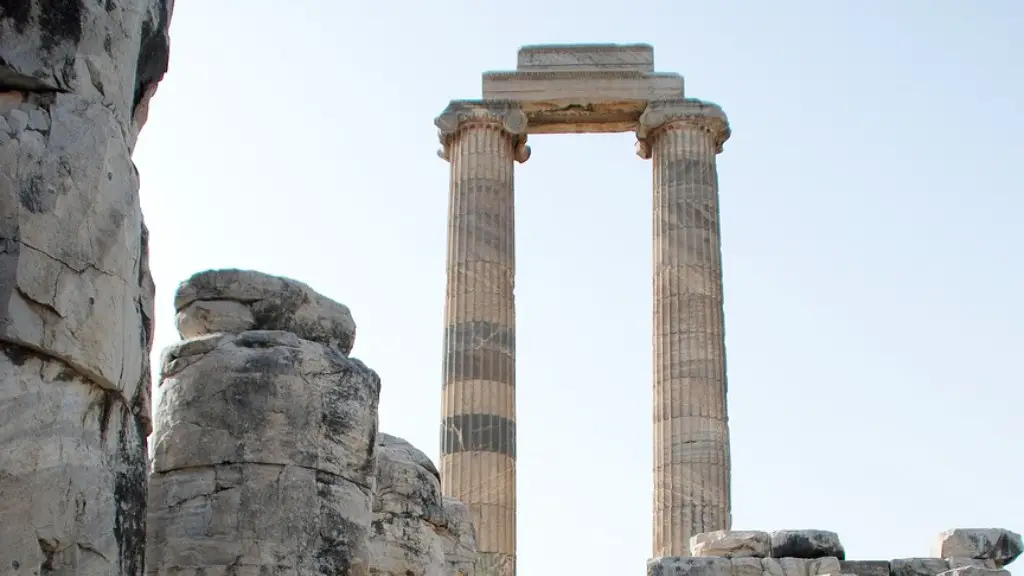The ancient Romans were said to shave their body hair. Whether this was for hygiene reasons, aesthetic reasons, or both is up for debate. Some historians believe that the ancient Romans were clean-shaven because they often took baths, which were seen as a sign of luxury. Others believe that the ancient Romans shaved their body hair because they wanted to look more like the statues of gods and goddesses that were popular at the time. Regardless of the reasons, it is clear that the ancient Romans had different grooming habits than we do today.
The answer to this question is not known for certain. Some historians believe that the ancient Romans did shave their body hair, while others believe that they did not.
Did ancient Romans shave their pubic hair?
It is interesting to note that in ancient times, both men and women considered it uncivilized to have pubic hair. To remove the hair, they used tools to pluck them out individually or singed them off with fire. Other methods of hair removal included using razors or sharpened stones. In some cases, depilatory cream was also used.
The Romans were known for their meticulous grooming habits and this included shaving. They would use a pumice stone to rub off any stubble and then a novacila to remove the hair. Afterward, they would use perfumes and oils to soften the skin. If you were an elite member of society, you would have a personal barber visit your household. Body hair (and the removal of it) became a status symbol.
Did ancient people shave body hair
It is believed that Stone Age men started shaving 100,000 years ago by using clam shells like tweezers and pulling out their beard hair. About 60,000 years ago, man discovered shaving, and started using sharpened obsidian and clam shells to shave their beards.
It is believed that the ancient Romans began shaving their armpits around 300BC. This was done using a sharp knife or razor. Tonsores, or barbers, were introduced around this time, so the earliest Romans would have been clean-shaven. However, it is unknown how widespread the practice of shaving was among the general population.
What did the Romans use instead of soap?
Soap was not used by the Greeks and Romans to clean their bodies. Instead, they used water baths and then smeared their bodies with scented olive oils. They used a metal or reed scraper called a strigil to remove any remaining oil or grime.
Roman women wore their hair in symmetrical styles, often with a center part. This was because they were afraid that more delicate styles would chip or break. Sculptors often made braids and curls that were much thicker than real ones in order to avoid this.
When did humans start removing body hair?
There are many reasons why people may choose to remove hair from their bodies. For some, it is a cultural or aesthetic preference. For others, it may be for hygienic or sexual reasons. And for still others, it may be for medical or religious reasons.
There are many different methods of hair removal, and each has its own benefits and drawbacks. Some methods are more effective than others, and some are more painful. Ultimately, the best method of hair removal is the one that works best for you and your individual needs.
Shaving and facial hair removal was a common practice in ancient times, as evidenced by cave paintings depicting men without beards. It is believed that people shaved or removed unwanted hair using clamshells (which were used like tweezers) or with blades made of flint. This was likely a necessary hygiene measure, as hair can trap dirt and debris, which can lead to infection. In addition, shaving or removal of facial hair may have been seen as a way to improve appearance.
Did the Greeks shave their bodies
It is interesting to note that ancient Greek women also shaved their entire bodies, and that a razor was a piece of women’s toilet equipment, not a man’s. The fashion for adult men to be clean shaven was introduced in the Greek world by Alexander the Great, as a beard gave an enemy a hand-hold in battle. This shows how important cleanliness was considered to be in ancient Greece, both for men and women.
The removal of female body hair has long been seen as a marker of femininity and as a way to separate oneself from those seen as lower class or cruder. In the early 1900s, this idea was amplified and many upper and middle class white women saw smooth skin as a sign of femininity. This ideal persists today, though it is increasingly being challenged.
Why didn’t Romans have beards?
This is an interesting topic to explore. Beards have always been seen as a sign of masculinity, but in ancient Rome, they were considered a sign of slovenliness and squalor. This is because the majority of Roman men were clean-shaven. Only a handful of men actually sported beards, and they were usually seen as outcasts or eccentrics. In recent years, there has been a resurgence in the popularity of beards, and many men are now proudly displaying their facial hair. It will be interesting to see if this trend continues, or if beards will once again be seen as a sign of slovenliness.
The Egyptians were big fans of being clean-shaven, and this was motivated by vanity, hygiene, and simplicity. High priests would often go for full-body shaves, and tweezers were used to pull hair out. Alternatively, waxing and sugaring were also popular methods.
Did Romans use deodorant
The ancient Romans used a mixture of charcoal and goat fat as deodorant. In the 19th century, lime solutions or potassium permanganate were used. These substances work by disinfecting. The first commercial deodorant was patented by Edna Murphey in Philadelphia, PA, USA, in 1888.
The Romans were among the first to use alumen, the main ingredient in many antiperspirants today, to halting foul odors. This showed how significant halting foul odors was to them and how much they valued personal hygiene. In the 21st century, we continue to use alumen to help us stay clean and fresh-smelling.
Did Romans wear undergarments?
The Romans certainly did wear underwear, in the form of a loincloth knotted on both sides. This was a common form of protection for athletes at the time. The underwear went by a number of different names, such as subligaculum or subligar.
One of the most pressing problems in the past was how to remove stains, dirt, and grease without the use of soaps and detergents. The Romans discovered an effective stain-remover: human urine with its high ammonia content. Urine-based cleaning agents, euphemistically known as ‘chamber lye’, were used well into the 19th century.
Final Words
There is no single answer to this question since personal grooming habits varied among different people in ancient Rome. Some ancient Romans did shave their body hair, while others did not.
There is no conclusive evidence as to whether or not ancient Romans shaved body hair. However, it is generally believed that they did, as grooming was an important part of Roman culture.





